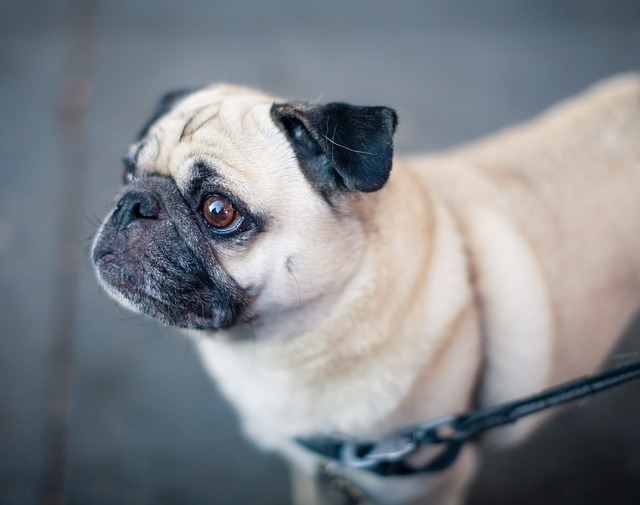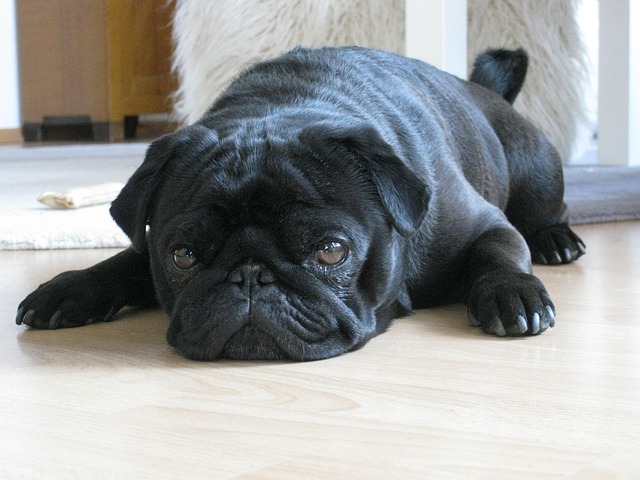Introduction
Brief Overview of the Pug Breed
Pugs are a distinct and unique breed of dog, known for their wrinkled faces, large eyes, and compact size. Originating from China and one of the oldest breeds, pugs have made their way into the homes and hearts of many around the globe. They belong to the toy group of dog breeds, making them ideal for indoor and apartment living.
Importance of Choosing the Right Pet for Your Lifestyle
Choosing a pet, especially a dog, is a long-term commitment that involves careful consideration. The breed you select will inevitably have a significant impact on your lifestyle, and likewise, your lifestyle will affect the well-being of your pet. Factors such as activity level, space, family situation, and personal preferences all come into play.
Questions Many People Ask About Pugs
Before diving into the details, we’ll address some of the most commonly asked questions about pugs, such as why they’re so special, the reason for their relatively high cost, and their intelligence level. We’ll also explore whether pugs can lead a happy life and what their average lifespan is.
Why are Pugs so Special?
Unique Appearance: Wrinkled faces and compact size
Pugs are instantly recognizable by their distinct, wrinkled faces and compact bodies. Their facial wrinkles are not just cute; they’re a historical characteristic, tracing back to ancient Chinese origins where the wrinkles were highly prized. The folds are said to resemble Chinese characters, adding an element of mystique and allure to the breed. Their small size makes them adaptable to various living conditions, from spacious homes to smaller apartments. Their unique appearance often makes them the center of attention, winning the hearts of both owners and onlookers alike.
Affectionate Nature: Loving and crave human attention
One of the reasons why pugs are special is their affectionate nature. They are incredibly loving dogs that crave human interaction and attention. This makes them excellent companions, particularly for those who may be looking for emotional support in a pet. Their loyalty and devotion to their owners are unparalleled. Pugs are often described as “shadows” because they like to follow their humans wherever they go, whether it’s to the kitchen or the bathroom, highlighting their affectionate and attached nature.
Sociability: Get along well with people and other animals
Pugs are also known for their social personalities. They generally get along well with both adults and children, making them a great family pet. Moreover, their social nature extends to other animals as well. They are often good with other dogs and even cats, making them a versatile choice for households with multiple pets. This sociability makes them great for gatherings and social events, where they are often the life of the party.
Good for Apartment Living: Don’t require a lot of space
Another special feature of pugs is their adaptability to different living conditions. Due to their small size and relatively moderate activity level, they make excellent pets for apartment living. They don’t require large yards to roam, although they do enjoy walks and playtime. Their size and temperament make them well-suited for both suburban and urban environments, provided they get the necessary exercise and mental stimulation.
Each of these characteristics adds a layer to why pugs are considered special by many. Their unique appearance, affectionate nature, sociability, and adaptability make them not just pets but beloved members of many families worldwide.

Why is a Pug Dog Expensive?
Breeding Costs: Specialized breeding to maintain characteristics
One of the primary reasons pugs are relatively expensive is the cost associated with specialized breeding. Pugs have very distinct features—such as their flattened face, curled tail, and specific coat colors—that breeders work diligently to maintain. The breeding process is often meticulous, involving genetic testing and selective pairing to produce pugs that meet the breed standard. Specialized breeding doesn’t come cheap; it requires time, effort, and resources, all of which factor into the higher price tag of acquiring a pug. There’s also the aspect of breeding for health; because pugs are susceptible to particular health issues, responsible breeders undertake additional measures to produce as healthy a lineage as possible, further adding to the cost.
Veterinary Care: Prone to specific health issues
Pugs are unfortunately prone to a range of health issues, including respiratory problems, joint issues, and skin conditions. Addressing these health concerns often involves specialized veterinary care, including advanced diagnostics and treatments. Even before you acquire a pug, these healthcare needs are factored into the initial cost by responsible breeders, who will often provide the first round of vaccinations, microchipping, and sometimes even spaying or neutering. The potential for high veterinary costs not only impacts the initial price but also serves as a consideration for the ongoing expense of pug ownership.
Popularity: High demand often inflates price
The pug’s popularity also contributes to its high cost. Being featured prominently in media, from movies to social networks, has made the pug one of the most sought-after dog breeds. High demand often means breeders can command a higher price for these dogs, especially if they are of a particularly prized lineage or come with certifications. It’s basic economics: high demand coupled with limited supply usually results in higher prices.
What to consider in the total cost of owning a pug
When considering acquiring a pug, it’s important to factor in not just the initial purchase price but also the lifetime costs of ownership. This includes food, grooming, and regular veterinary care, along with potential emergencies and health conditions that may arise. Some owners opt for pet insurance to help mitigate these costs, but that’s another ongoing expense to consider.
Each of these factors—specialized breeding, health considerations, and high demand—contribute to the pug’s status as a more expensive breed. Understanding these elements can help potential owners make a more informed decision about whether a pug is the right pet for them, both emotionally and financially.

Is Pug the Smartest Dog?
Intelligence Metrics: Problem-solving, obedience, and social intelligence
When assessing a dog’s intelligence, several metrics are considered: problem-solving abilities, obedience, and social intelligence among them. Pugs might not top the charts in obedience or problem-solving when compared to breeds like the Border Collie or the Poodle, but they do possess a form of intelligence that is social and emotional. They are adept at reading human emotions and responding appropriately, a quality that makes them excellent companions. However, it’s essential to note that intelligence varies from dog to dog and isn’t solely determined by the breed.
Training Challenges: Stubbornness can sometimes be an issue
Pugs are often considered to be stubborn, which may be mistaken for a lack of intelligence. The breed’s stubbornness could make training more challenging, but it doesn’t mean the pug isn’t smart. They often know exactly what is being asked of them but choose to comply on their terms. This trait may require a dog owner to be more patient and creative in training methods. Positive reinforcement and consistency usually yield better results than harsher training methods, given the pug’s sensitive nature.
Comparison with Other Breeds: Where they stand in the intelligence spectrum
In studies that rank dog intelligence, such as those conducted by psychologist Stanley Coren, pugs often find themselves in the lower half of the rankings. Breeds like Border Collies, German Shepherds, and Golden Retrievers usually top these lists due to their work-oriented intelligence metrics, such as obedience and problem-solving. However, it’s important to remember that intelligence is multifaceted. While a pug may not be the smartest when it comes to obedience training or herding sheep, they excel in companion-oriented roles that require social intelligence and emotional sensitivity.

Can Pugs Live a Happy Life?
Physical Activity: What they need to stay healthy
Pugs aren’t known for being overly active dogs, but like all breeds, they do require a certain level of physical activity to stay healthy and happy. Short walks and playtime are usually enough to keep a pug physically satisfied. Due to their brachycephalic (flat-faced) nature, it’s crucial to avoid over-exerting them, especially in hot or humid conditions, as they are prone to overheating. Some pugs enjoy interactive toys that stimulate them physically and mentally. By providing your pug with the right amount and type of exercise, you can help ensure that they lead a healthy, happy life.
Emotional Needs: Importance of companionship and mental stimulation
Pugs are known for being emotionally sensitive and thrive on companionship. They generally don’t like to be left alone for long periods and may experience separation anxiety. Interactive games, puzzle feeders, and quality time spent with family members can go a long way in keeping a pug emotionally satisfied. Their need for human interaction is so strong that many pug owners report their pets following them from room to room. This emotional bond isn’t just beneficial for the pug but is often one of the primary reasons they bring so much joy to their owners.
Accommodations: Ideal living conditions for a happy pug
While pugs are adaptable and can live in various settings, from large homes to small apartments, they do have some specific needs that, when met, contribute to a happier life. Temperature control is important due to their susceptibility to overheating. Soft bedding and a cozy space to call their own can also make a significant difference in a pug’s happiness level. They also benefit from a consistent routine, which gives them a sense of security and well-being.
Anecdotes: Stories of happy pugs and their owners
There are countless stories of pugs leading happy lives filled with love, comfort, and plenty of snuggles. From pugs that have become local celebrities in their neighborhoods due to their charming antics to those that have formed incredible bonds with their human or animal siblings, the anecdotal evidence supporting the happiness of pugs in their living environments is abundant. These stories often feature pugs that are well taken care of, with owners who understand and cater to their specific needs.
How Long Do Pugs Live?
Average Lifespan: Statistical Overview
The average lifespan of a pug ranges from 12 to 15 years, although some can live even longer with proper care. This is fairly typical for small dog breeds but is subject to several factors, including health, genetics, and overall lifestyle. The longevity of a pug is similar to that of other small dog breeds but may vary significantly depending on various circumstances. It’s essential to consult with a veterinarian to get a comprehensive understanding of your pug’s specific health needs and life expectancy.
Health Factors: What Influences a Pug’s Lifespan?
Pugs are susceptible to certain health issues that can influence their lifespan. Respiratory problems, joint issues, and obesity are some of the most common health concerns for this breed. Early detection and management of these issues are critical for prolonging a pug’s life. Regular veterinary check-ups, appropriate medication, and lifestyle adjustments can mitigate some of these health risks. For instance, maintaining a healthy weight can substantially reduce the risk of joint issues and other weight-related complications.
Importance of Diet and Exercise: Keys to Longevity
Diet and exercise play an essential role in determining how long a pug lives. High-quality dog food that is appropriate for their age, size, and health needs can make a significant difference in their well-being. Physical activity, while less demanding compared to other breeds, is also vital. Moderate exercise can help keep a pug’s weight in check and can ward off many potential health problems. Balancing diet and exercise under a vet’s guidance can help extend your pug’s lifespan.
Emotional Well-being: How Happiness Contributes to Longevity
While physical health is crucial, emotional well-being also contributes to a pug’s lifespan. Stress and anxiety can have adverse health effects over the long term, and given a pug’s emotionally sensitive nature, providing a stable, loving environment is key. Pugs thrive on human companionship, and the emotional bond they form with their owners can positively influence their health and longevity.


Leave a Reply